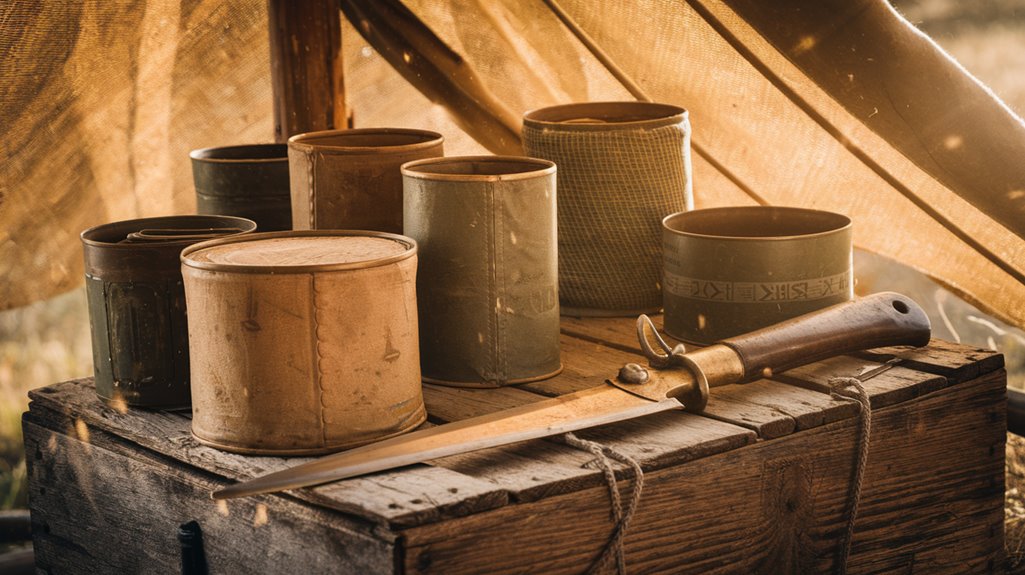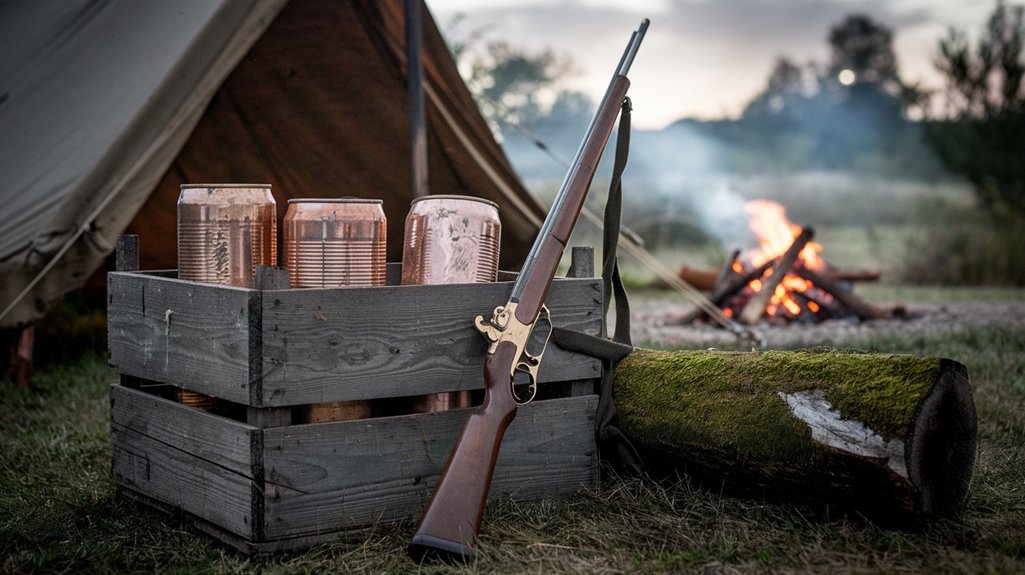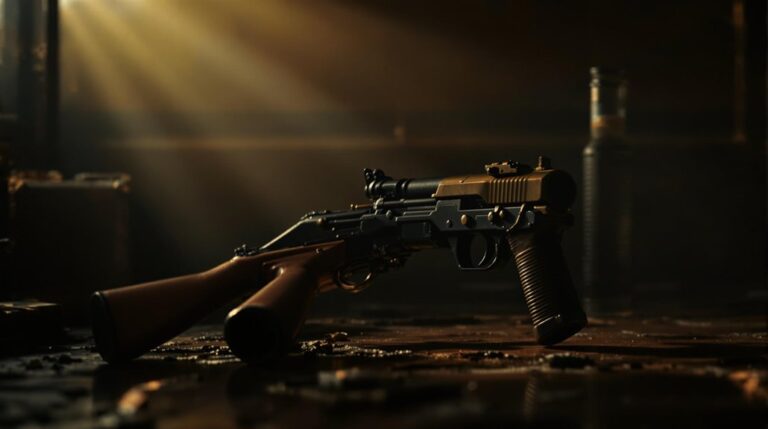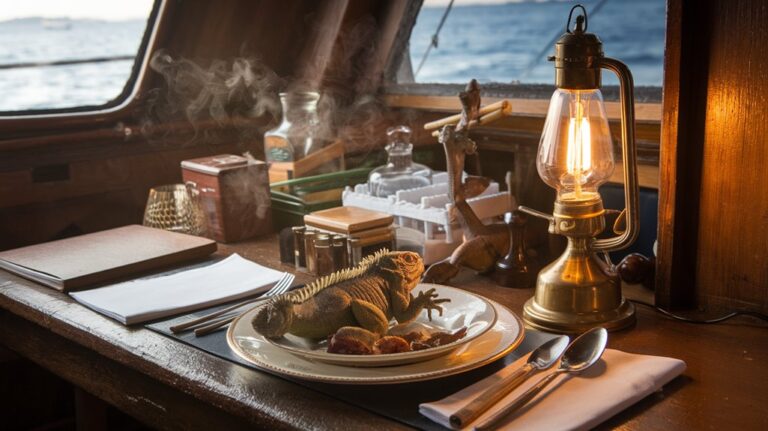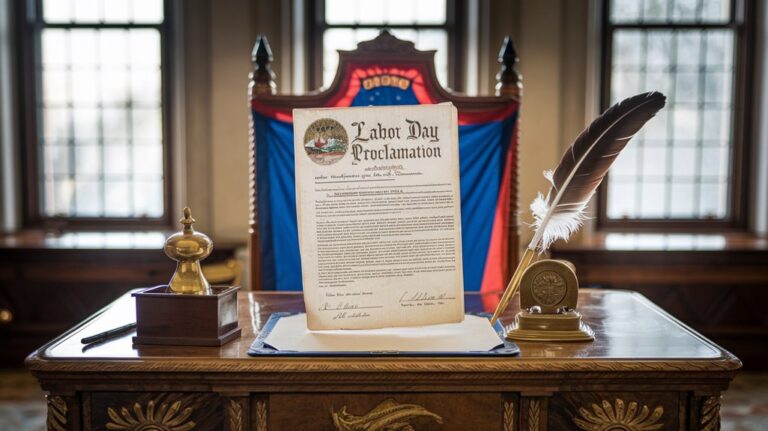Early Canned Food Required Soldiers to Open Cans With Bayonets
Like a fortress protecting its treasures, early tin cans kept their contents safe behind walls of thick metal that wouldn't surrender easily. You'll find it hard to imagine eating dinner if you had to stab your food container with a bayonet first, but that's exactly what soldiers faced in the early 1800s. Before the invention of the can opener in 1858, military personnel had to wrestle with their rations using whatever sharp implements they could find, often leading to frustrating and dangerous mealtime encounters.
The Military Origins of Canned Food
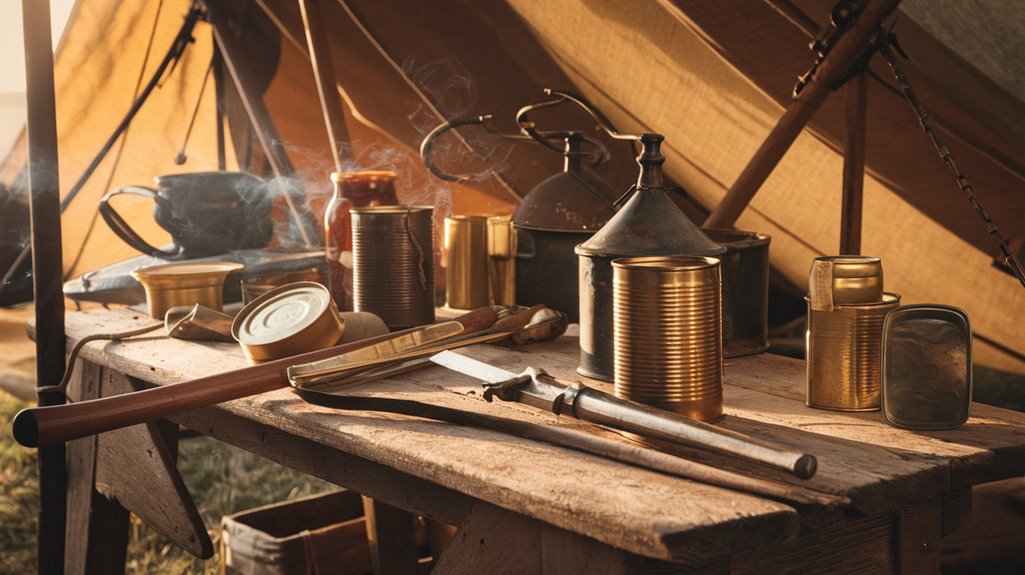
While many modern conveniences emerged from civilian innovation, canned food owes its existence to military necessity. When French chef Nicolas Appert developed his groundbreaking canning techniques in 1795, he wasn't just revolutionizing historical preservation methods – he was responding to a military challenge.
You see, armies and navies desperately needed a way to keep food from spoiling during long campaigns. After Appert perfected his method using champagne bottles and later tin cans, the military quickly embraced this innovation. In fact, Appert's work was so significant that the French government rewarded him for his revolutionary food preservation method. The need for preserved foods was so critical that soldiers relied on hardtack and salt meat as their primary sustenance before canning emerged.
The Royal Navy began using canned food in 1813, and other European forces followed suit. You'll find it interesting that early military adaptation of canned food came with unique challenges – soldiers had to resort to using bayonets or rocks to open these containers, as the can opener wouldn't be invented for another 40 years.
Napoleon's Quest for Food Preservation
As Napoleon watched his armies struggle with food shortages during extended campaigns, he recognized that military success hinged on keeping soldiers well-fed. His foresight led him to offer a substantial reward of 12,000 francs to anyone who could develop a reliable food preservation method.
This challenge caught the attention of Nicolas Appert, a French confectioner who'd revolutionize food security. Appert developed an innovative process of placing food in glass jars, sealing them with cork and wax, and boiling them to create an airtight environment. When the military began using these preserved foods, soldiers had to resort to using rocks and bayonets to open their rations. Well-nourished troops demonstrated superior energy and attentiveness in combat.
His method proved remarkably effective at preserving food's taste and nutritional value.
Napoleon's strategic understanding of the connection between nourishment and military effectiveness sparked a technological breakthrough that would transform not just warfare, but the entire food industry for centuries to come.
Soldiers vs. Tin Cans: The Opening Challenge
Three decades passed after the advent of canned food before anyone invented a proper way to open the containers.
While these canned innovations revolutionized soldier sustenance, they created a frustrating challenge for troops in the field. You'd be amazed to learn that soldiers had to resort to desperate measures, using their bayonets, rocks, or any sharp tools they could find to break into their rations. The bayonet's 38 cm blade proved especially useful for this task, though it wasn't its intended purpose.
Originally developed by Philippe de Girard, the tin can process was patented in 1810 and became the military's preferred food packaging method.
It wasn't until 1855 that Robert Yeates introduced the first can opener, later improved by Ezra J. Warner in 1858.
Before these inventions, you can imagine the struggle of Civil War soldiers who'd to navigate their way through tinplate just to access their meals.
The irony wasn't lost on military leaders: they'd found a way to preserve food indefinitely but couldn't provide an efficient way to access it.
From Bayonets to Can Openers
Before soldiers could rely on proper tools, they faced the daily challenge of breaking into their canned rations using whatever implements they could find.
Civil War soldiers often resorted to using their bayonets, a dangerous and inefficient method of accessing their preserved food. Early cans were made of thick steel plated material that made them especially difficult to open. Soldiers in Napoleon's army were among the first to use this method, often having to use hammers and chisels when bayonets weren't available.
The first breakthrough in can opener innovations came in 1858 when Ezra Warner patented his "bayonet and sickle" design.
Warner's invention featured a pointed blade for piercing and a curved blade for cutting, marking a significant improvement in historical preservation methods.
This was followed by J. Osterhoudt's key opener in 1866 and William Lyman's cutting wheel in 1870.
You'll find these early developments paved the way for more sophisticated designs, including the Church Key opener in 1892 and eventually the modern electric can openers we use today.
Impact on Battlefield Operations
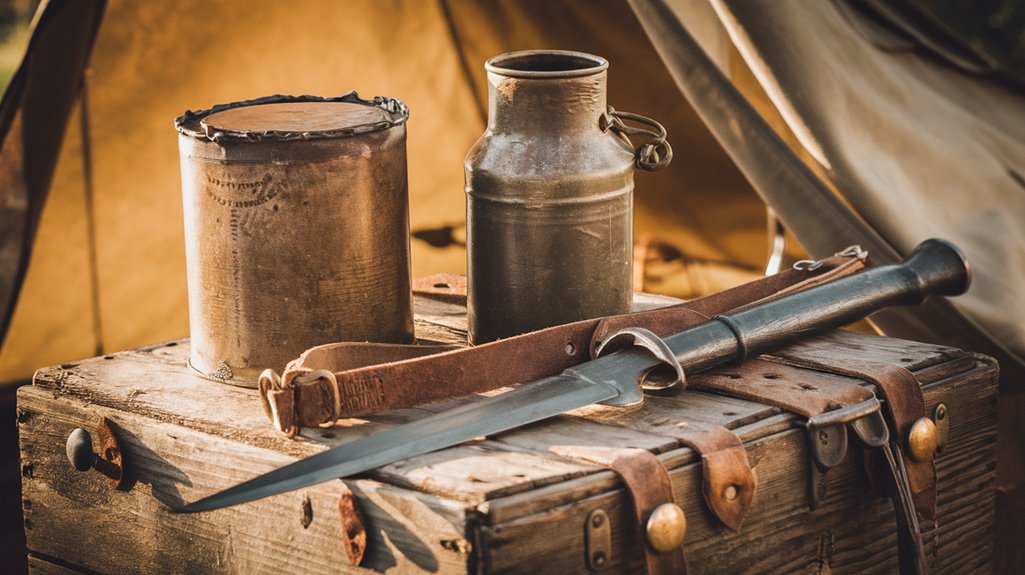
When military leaders discovered the transformative power of canned food, battlefield operations changed forever.
You'd find armies able to extend their campaigns further and longer, freed from the constant need to source fresh provisions. This breakthrough in food preservation allowed commanders to focus on strategy rather than immediate supply concerns.
Despite early logistical efficiency challenges with heavy cans and storage constraints, you'll notice how canned food revolutionized military planning. Troops could now operate in remote territories where fresh food wasn't available, and commanders could deploy forces with greater tactical flexibility. The innovative preservation method, developed by Nicolas François Appert, proved particularly valuable when first used by French naval forces in 1806.
You'd see improved soldier morale thanks to consistent meals, while the risk of casualties from malnutrition decreased considerably. This innovation wasn't just about feeding soldiers – it fundamentally changed how armies could move, fight, and sustain operations. The British Admiralty became one of the first major purchasers of canned food for their naval forces.
The Evolution of Military Rations and Packaging
Military rations underwent a remarkable transformation from basic survival provisions to sophisticated meal systems over two centuries of warfare.
You'll find that ration innovations evolved dramatically, starting with simple salt fish and hardtack in the 18th century to today's advanced MREs.
The progression of packaging materials reflects this evolution:
- Early tin cans sealed with lead solder during the Civil War
- Retort pouches introduced in the 1960s for better preservation
- Multilayer flexible packaging that enhanced shelf life
- Freeze-dried meals in lightweight containers for specialized forces
What began as basic canned goods has developed into an extensive system of rations, each designed for specific military needs. Troops found survival more manageable after coffee and sugar replaced the traditional spirit ration in 1832.
Modern military meals now prioritize nutrition, stability, and taste while maintaining operational efficiency through advanced preservation techniques. The flameless ration heater introduced in 1993 revolutionized how soldiers could prepare hot meals in the field.

